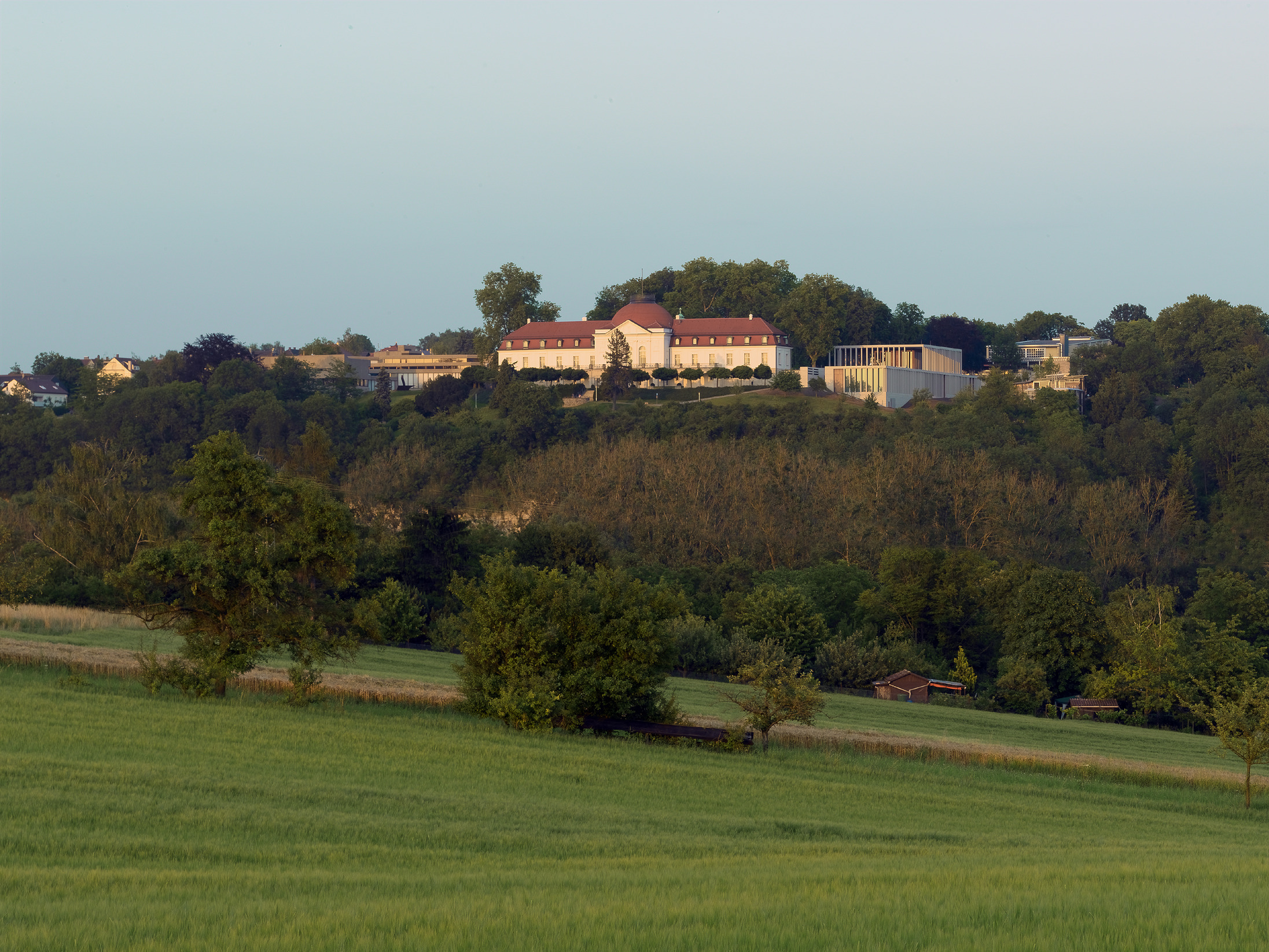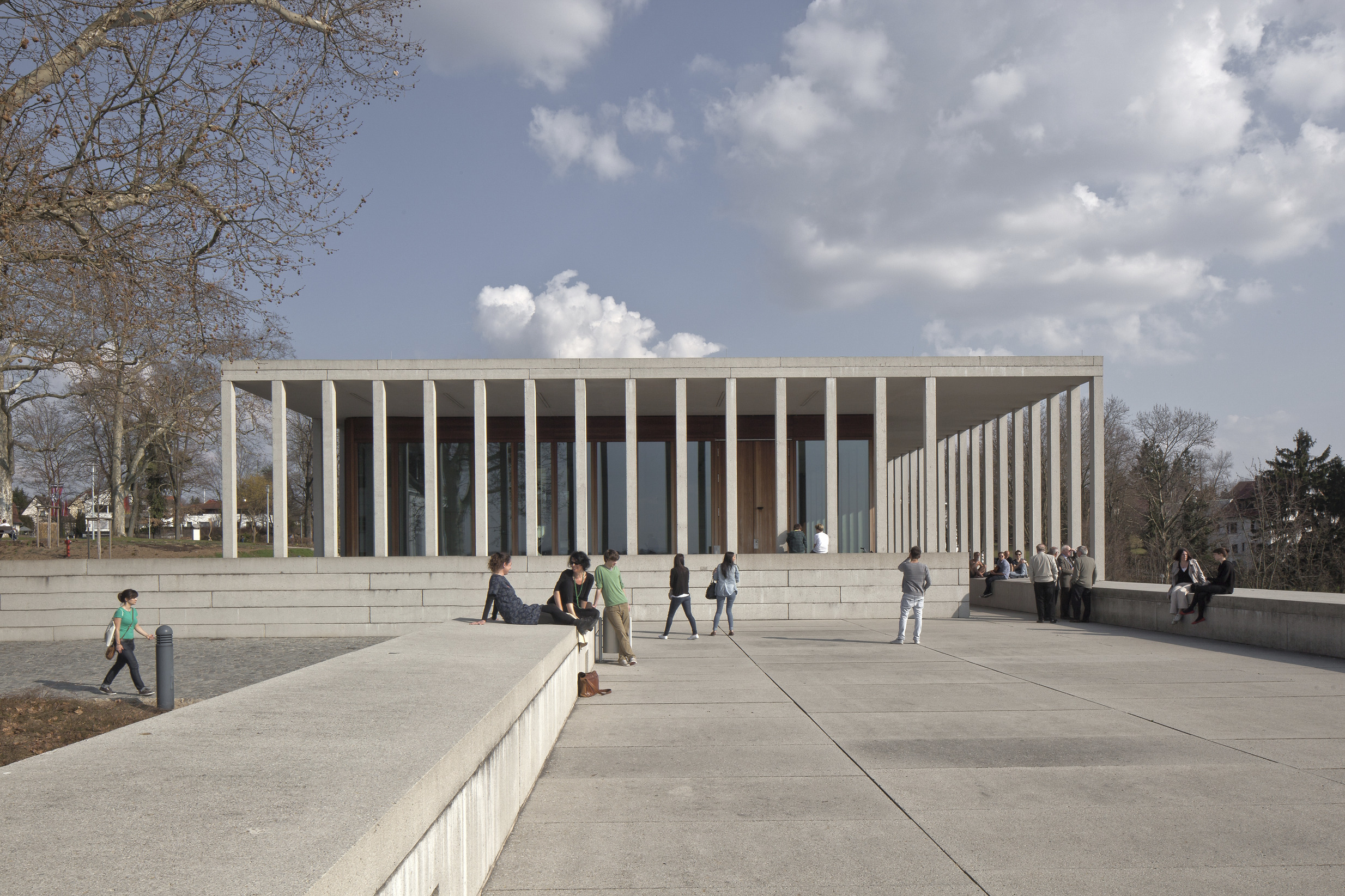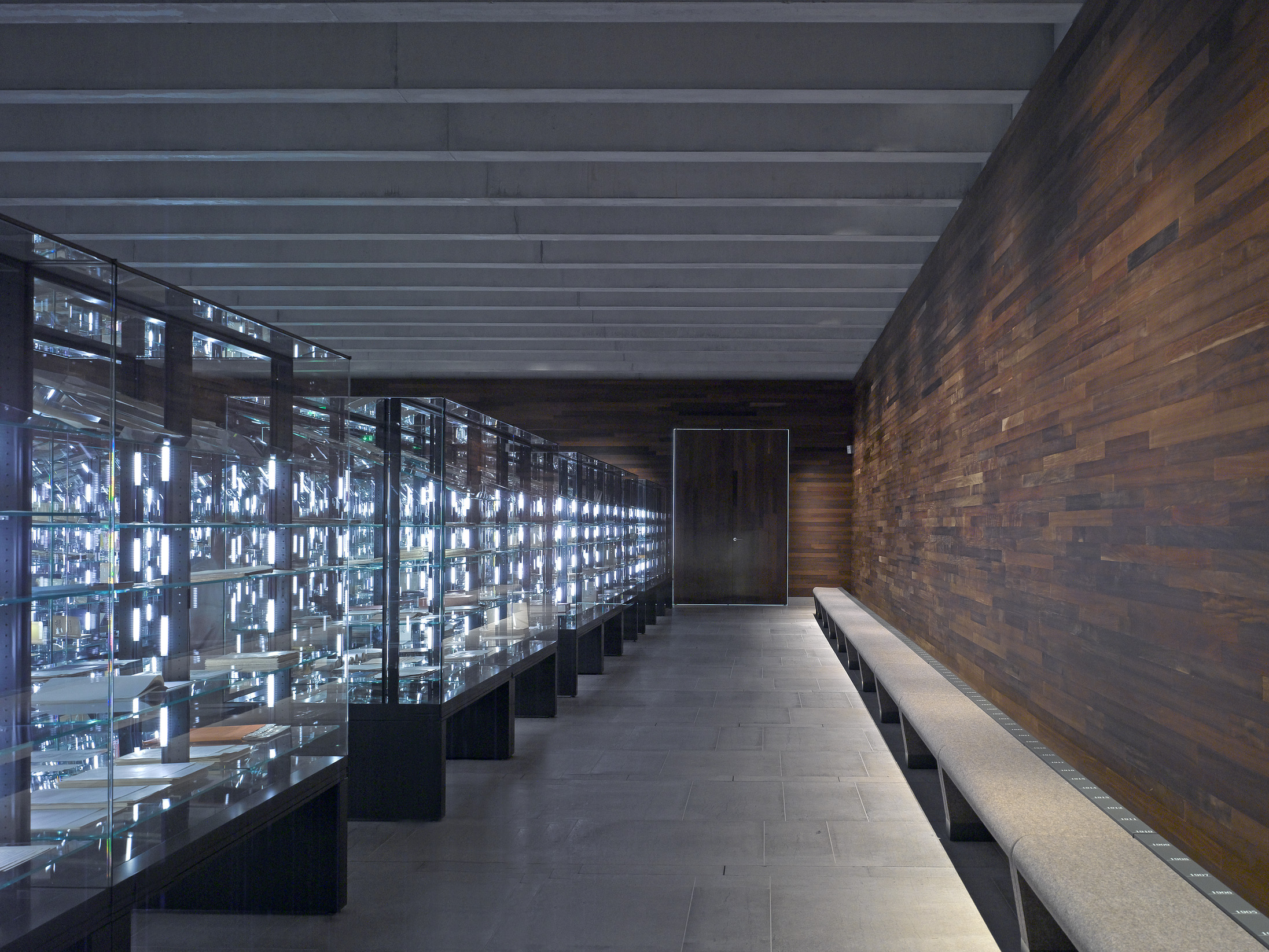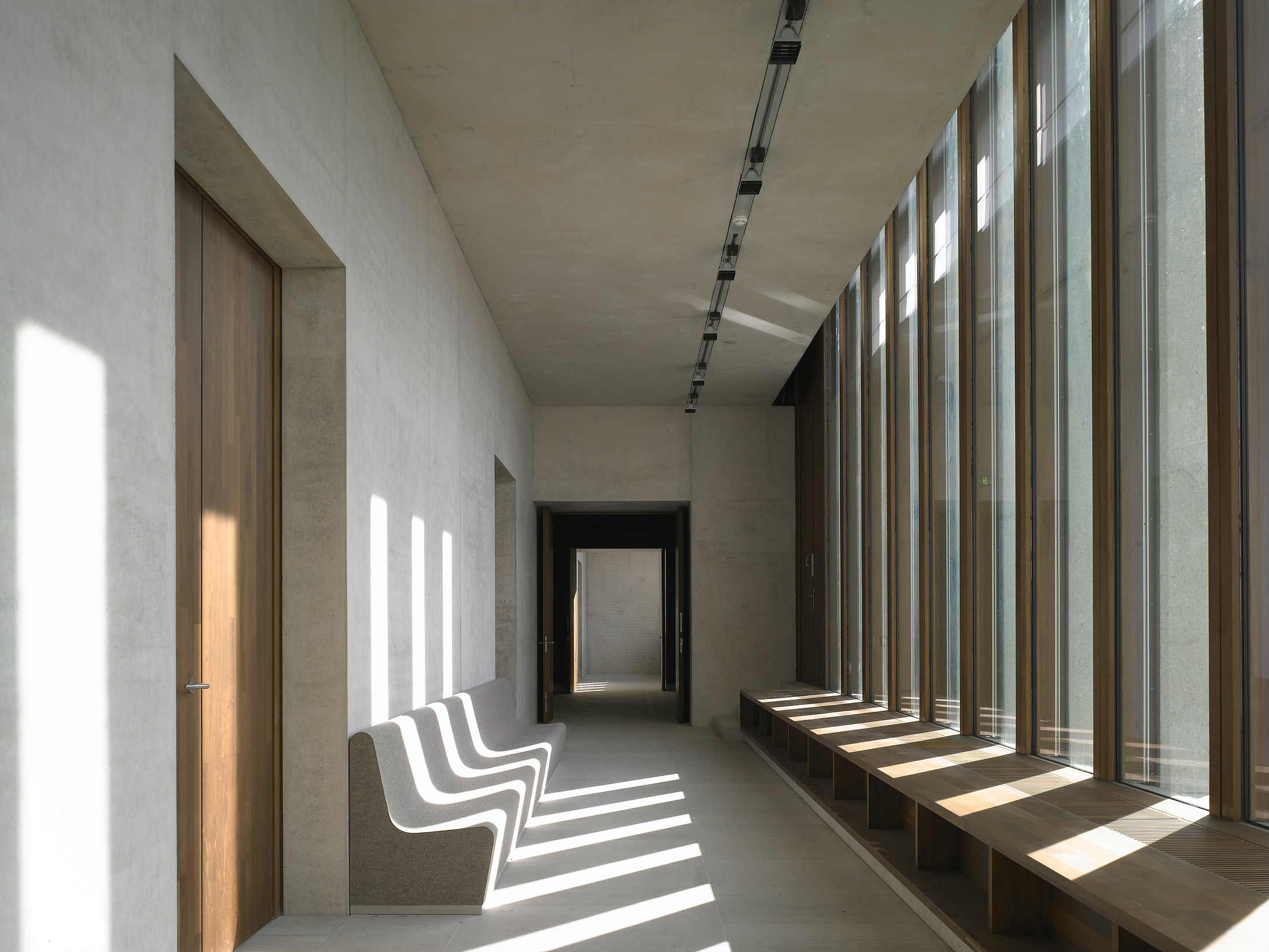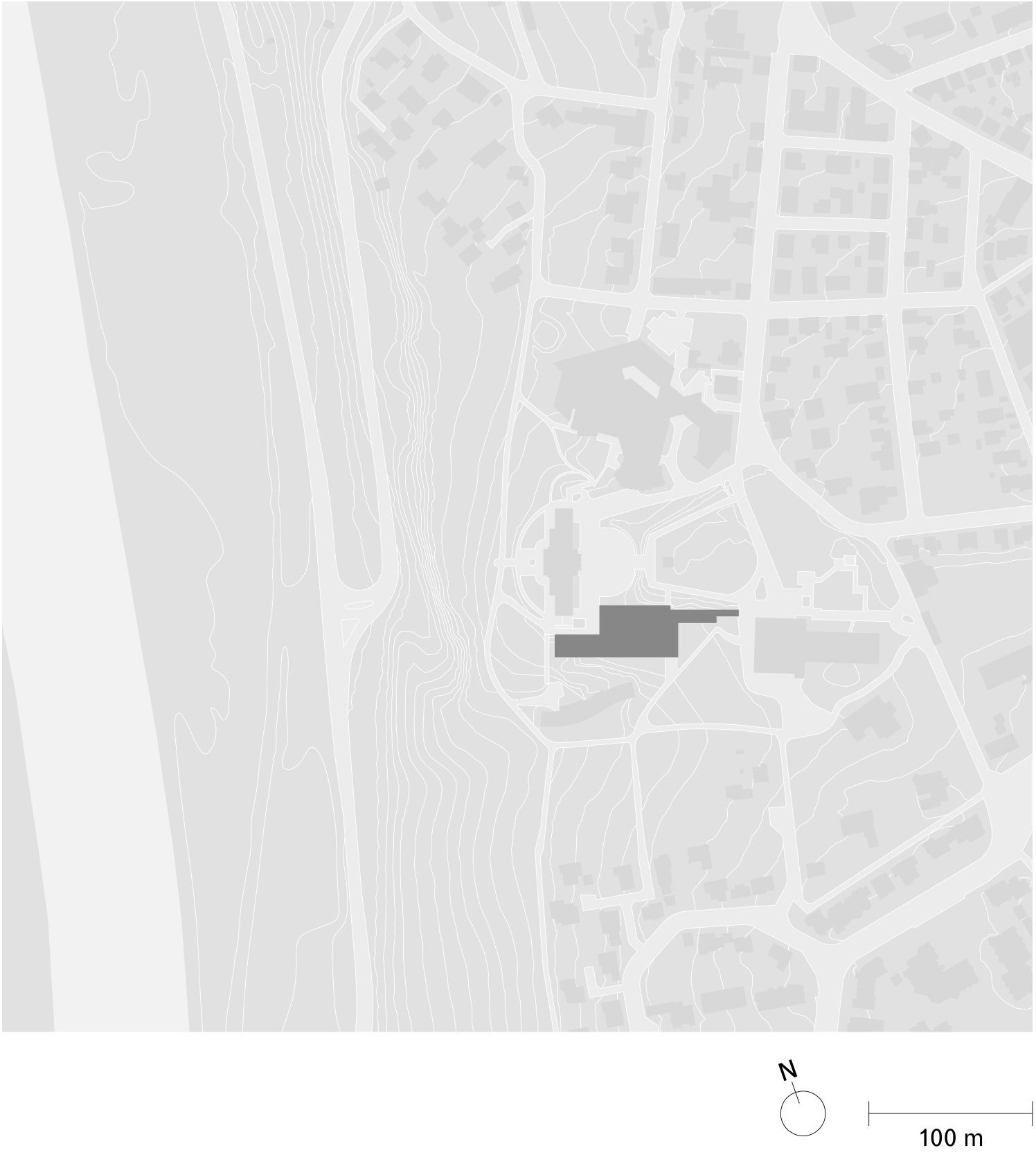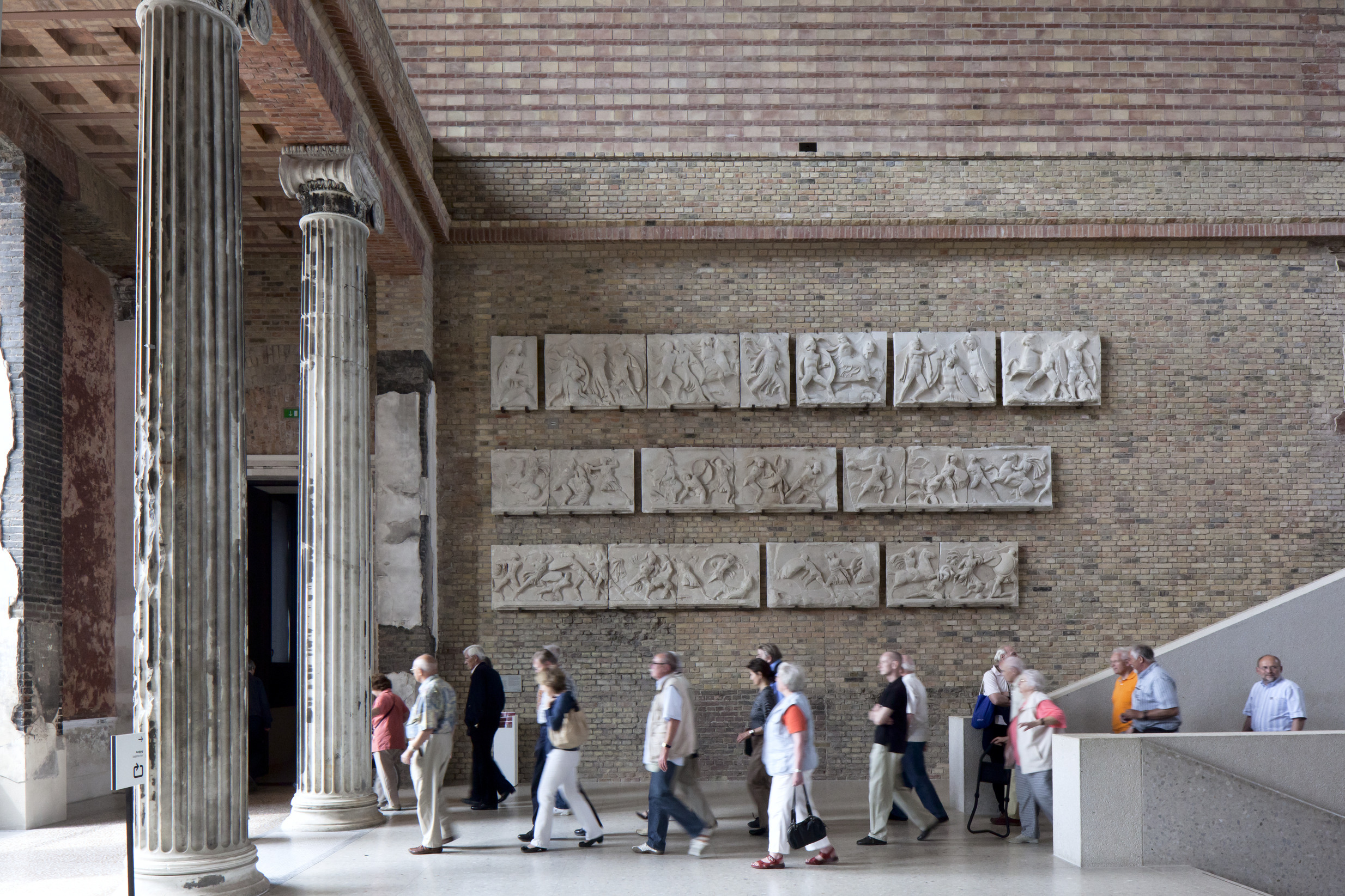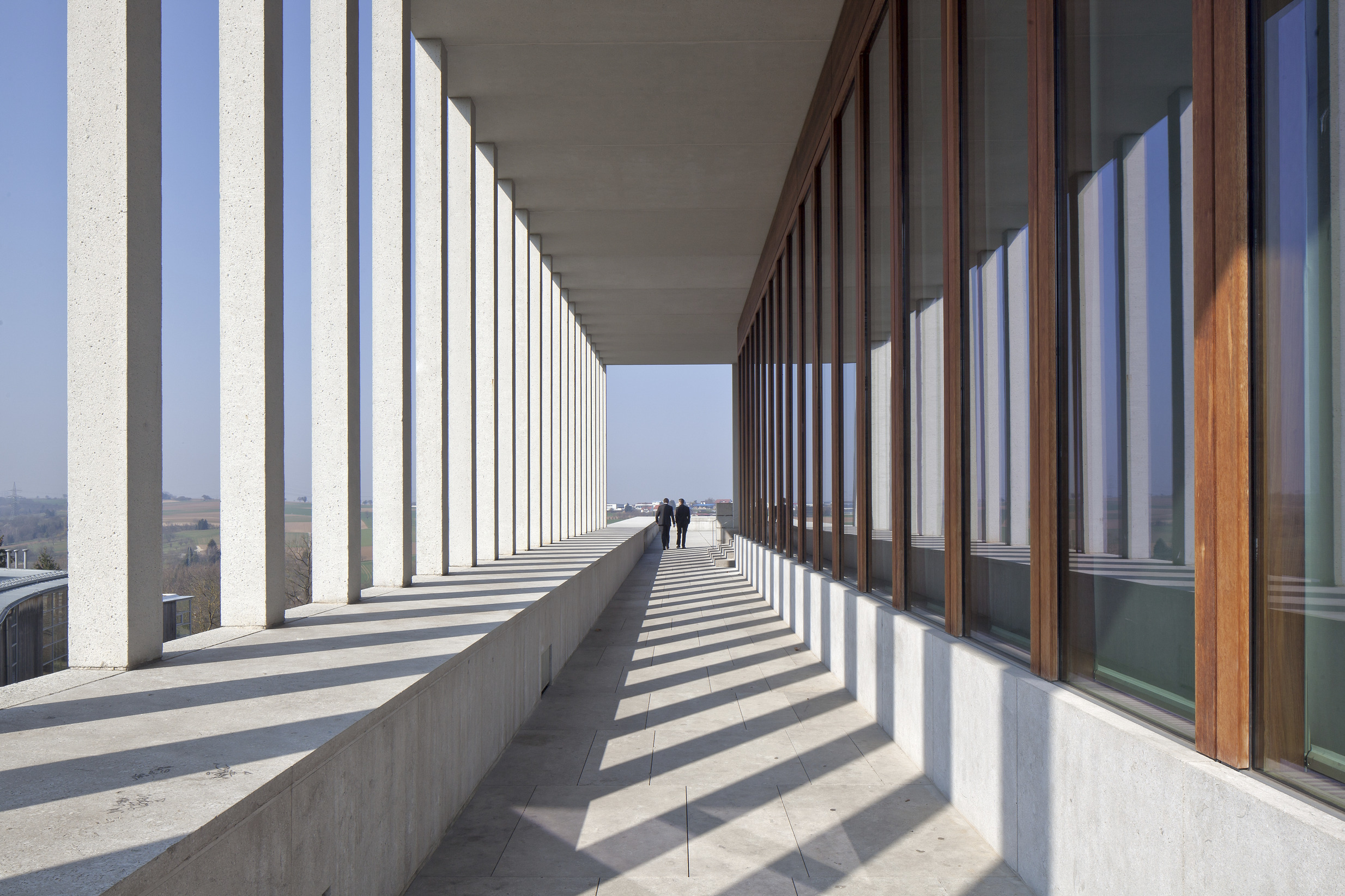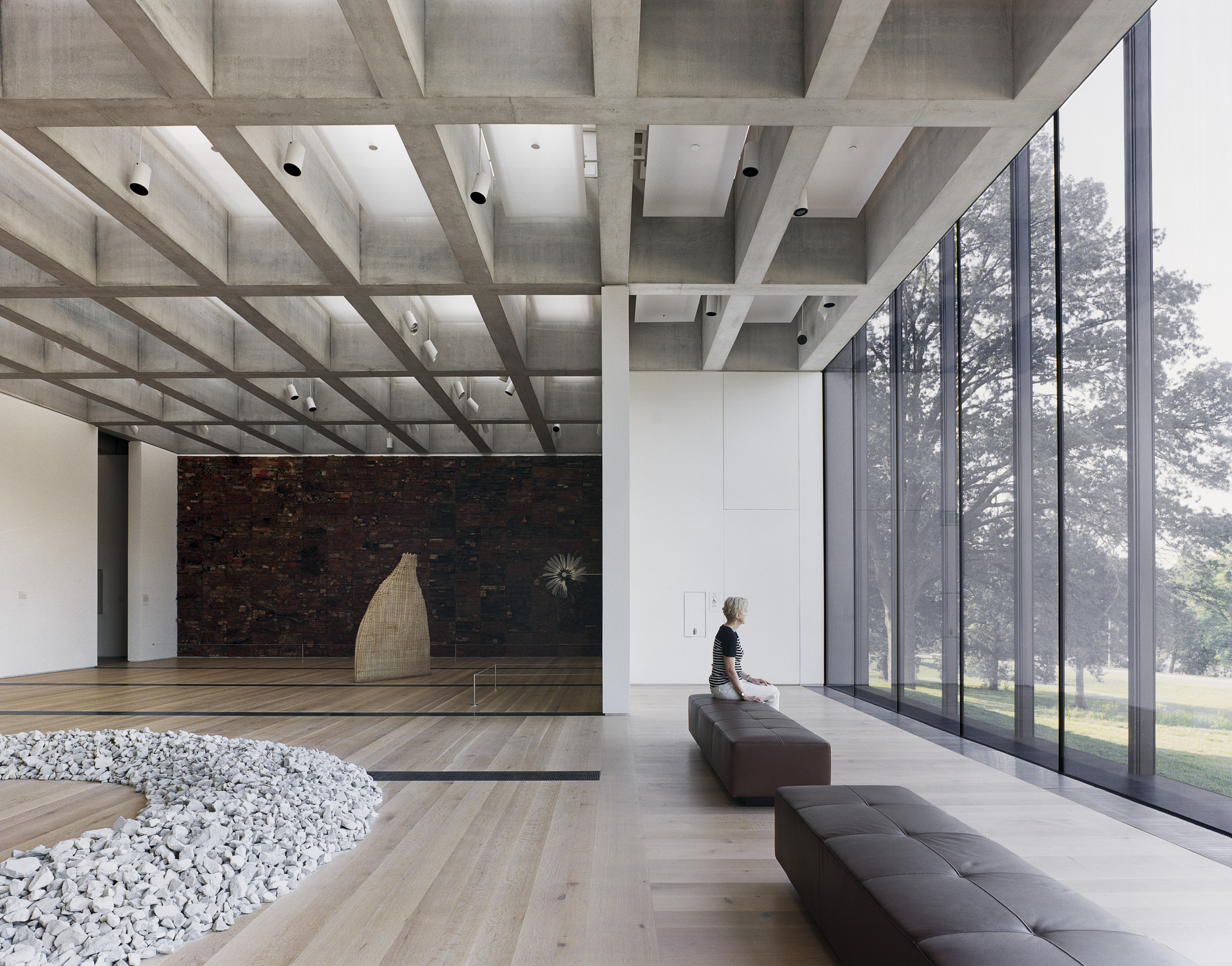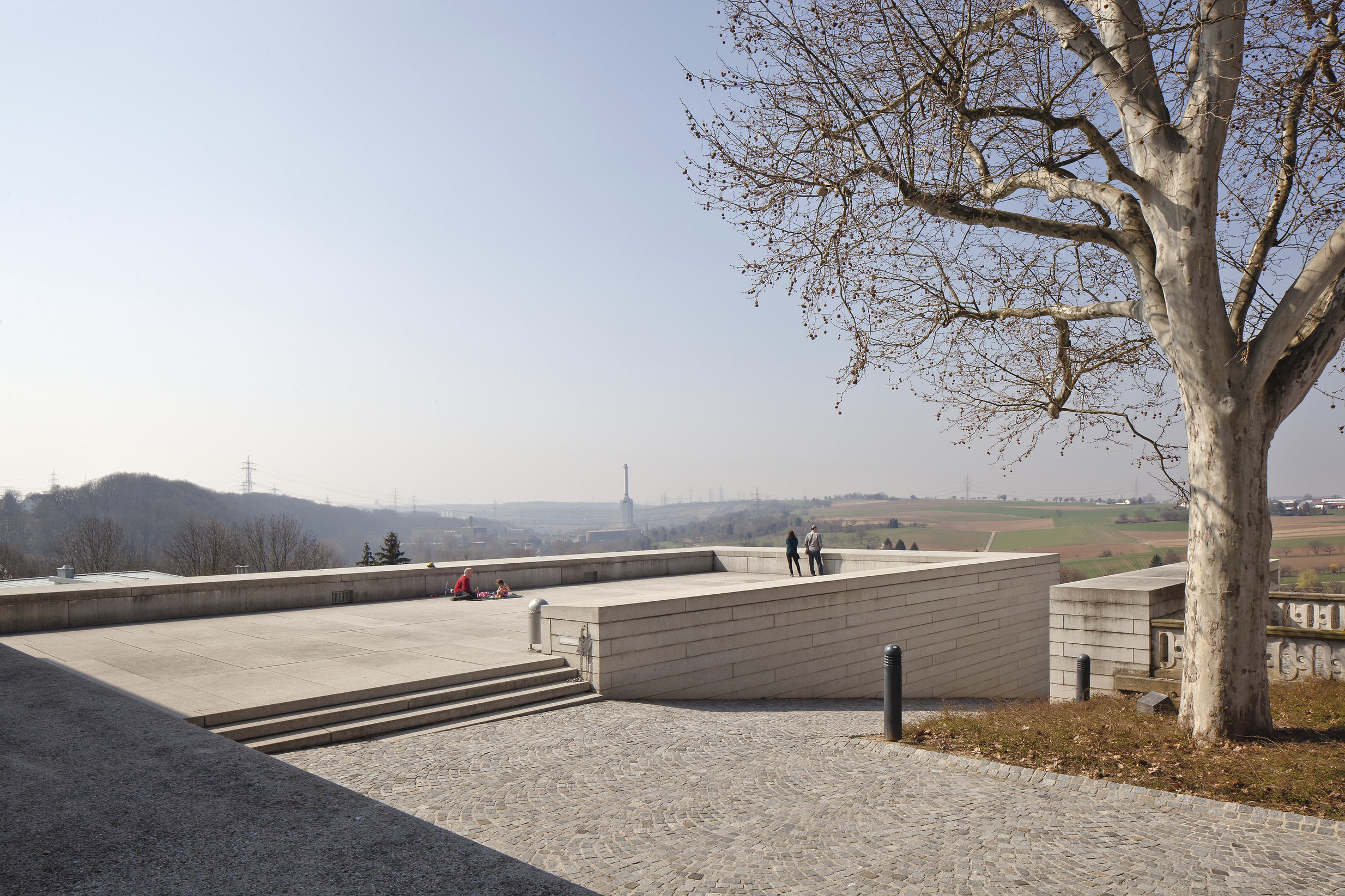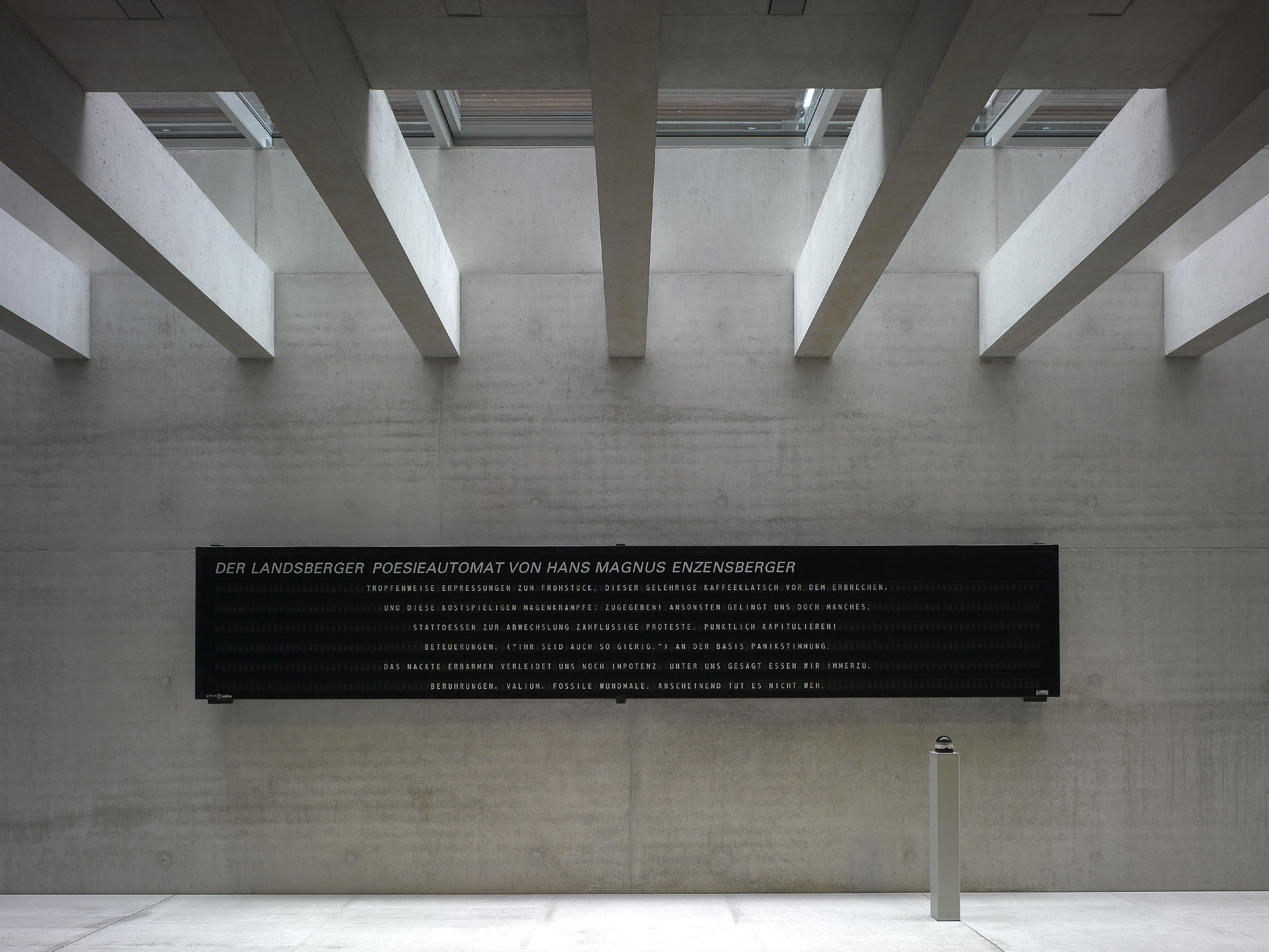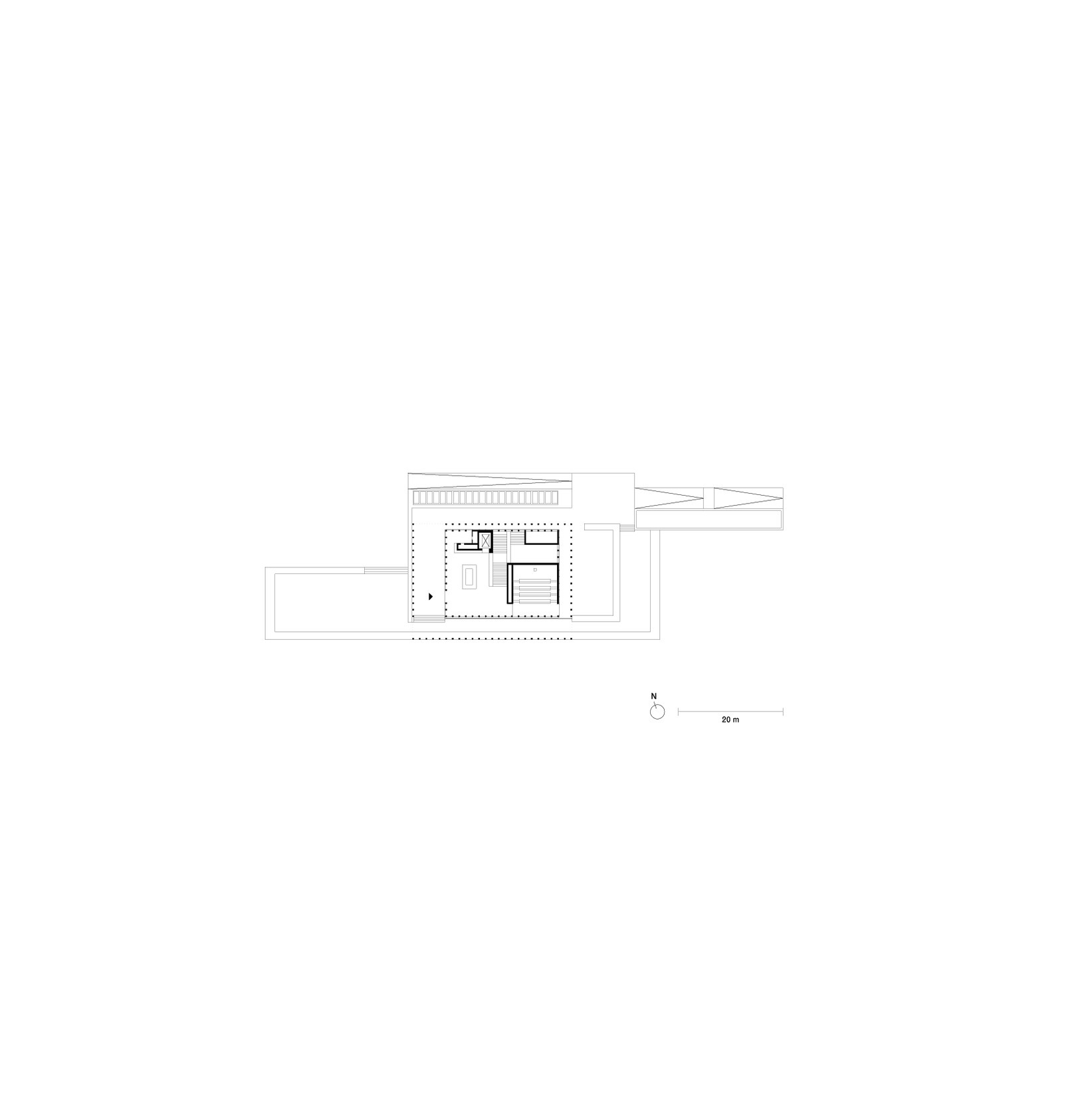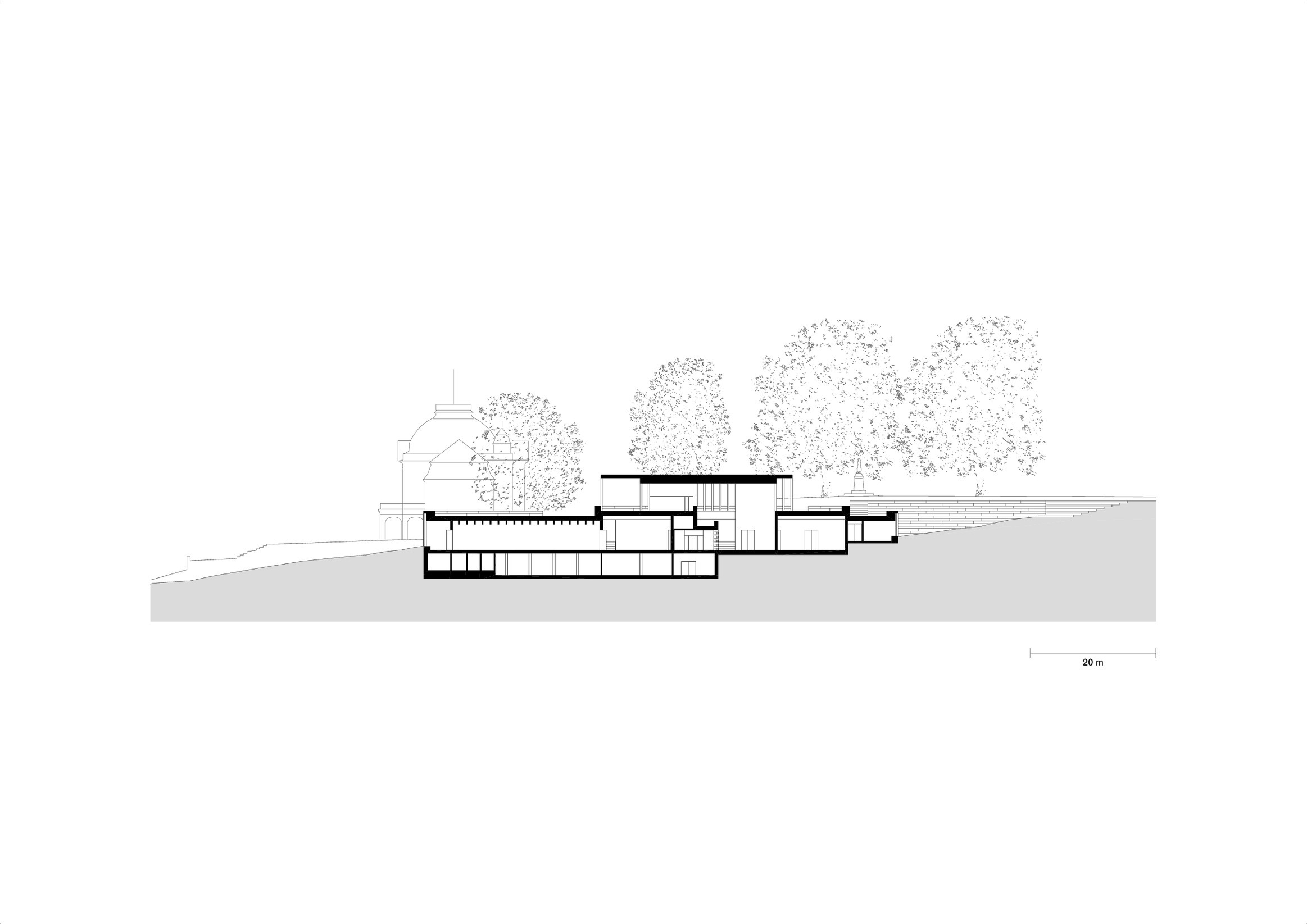Museum of Modern Literature
Marbach am Neckar, Germany
2001–06
The Museum of Modern Literature is located in Marbach, on a rock plateau overlooking the Neckar River valley. As the birthplace of Friedrich Schiller, the town’s park already held the Schiller National Museum, built in 1903, and the Archive for German Literature, built in the 1970s. Displaying artefacts from the extensive Twentieth Century collection from the Archive for German Literature, notably the original manuscripts of Franz Kafka’s ‘The Trial’ and Alfred Döblin’s ‘Berlin Alexanderplatz’, the new museum also provides panoramic views across the landscape.
Embedded in the topography, the museum reveals different elevations, reacting to its immediate context. The steep slope of the site creates an intimate, shaded entrance on the brow of the hill facing the Schiller National Museum with its forecourt and park, and a grander, more open series of tiered spaces facing the valley below.
On the highest terrace the building appears as a pavilion, providing the entrance to the museum. Slender concrete supports articulate the façade and enclose the entrance. The route through the entrance pavilion and down towards the introverted exhibition galleries gradually adjusts from daylight to the artificial light, necessary for the fragile exhibits displayed. These timber-panelled exhibition spaces are connected to naturally lit, glazed loggias, contrasting the internalised world of texts and manuscripts with the valley beyond.
The walls and ceilings are fair-faced, in-situ cast concrete. Limestone is used internally for the floors, and is also used as an aggregate in the pre-cast, sandblasted concrete elements of the façade. The use of enduring, solid materials gives the architecture a strong, physical presence and supports the notion of preserving the collection for future generations.
Data and credits
- Competition
- 2001–2002
- Project start
- 2002
- Construction start
- 2003
- Completion
- 2006
- Gross floor area
- 3,800m²
- Client
- Deutsche Schillergesellschaft e.V.
- Project controlling
- Drees & Sommer Projektmanagement und
Bautechnische Beratung, Stuttgart - User
- Deutsches Literaturarchiv Marbach
- Architect
- David Chipperfield Architects Berlin
- Partners
- David Chipperfield, Harald Müller, Alexander Schwarz (Design lead)
- Project architect
- Christian Helfrich (Competition), Martina Betzold (Concept design to Technical design, Site design supervision)
- Project team
- Wolfgang Baumeister, Daniela Brun, Laura Fogarasi, Hannah Jonas, Barbara Koller
- Competition team
- Martina Betzold, Mirjam von Busch, Andrea Hartmann, Franziska Rusch, Tobias Stiller, Vincent Taupitz
- Executive architect
- Wenzel + Wenzel Freie Architekten, Karlsruhe (Procurement, Construction supervision)
- Structural engineer
- IGB Ingenieurgruppe Bauen, Karlsruhe
- Services engineer
- Jaeger, Mornhinweg + Partner Ingenieurgesellschaft, Stuttgart
Ibb Burrer + Deuring Ingenieurbüro GmbH, Ludwigsburg - Building physics
- Müller-BBM GmbH, Berlin
- Fire consultant
- Hagen Ingenieurgesellschaft für Brandschutz mbH, Kleve
- Exhibition planning
- Element GmbH Architektur Produkt- und Ausstellungsgestaltung, Basel
- Photography
- Christian Richters, Ute Zscharnt
- Selected Awards
- RIBA Stirling Prize 2007
RIBA EU Awards 2007
Deutscher Architekturpreis 2007, Commendation
DETAIL Preis 2007
Conde Nast Traveller Innovation and Design Award, Category Culture
Chicago Athenaeum International Architecture Award
